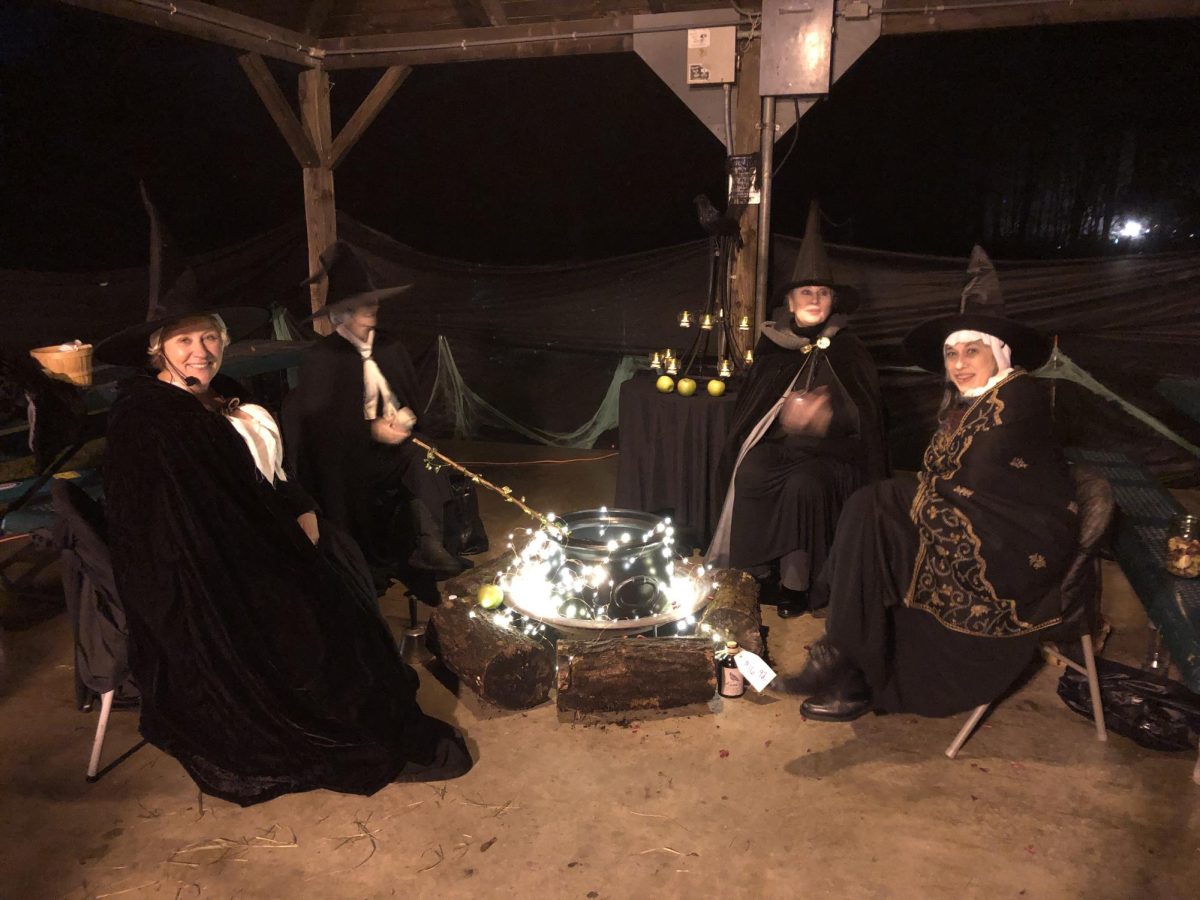WOODBURY — Salem, Massachusetts is known for its witch trials, but they were not the only, or even the first, state to have witch trials.
According to the State of Connecticut’s judicial branch, Alse Young from Windsor was the first person in America executed for witchcraft in May 1647.
More locally, approximately 300 years after she lived, the tale of Moll Cramer, the woman who earned the nickname “The Witch of Woodbury” is still told.
Much is said about the infamous Witch of Woodbury, but very little is actually documented. However, a few facts are known for sure: There was a woman named Moll Cramer, she was cast out from Woodbury with her child for being suspected of witchcraft, and there is no record of either of their deaths.
Many theories have been drawn over the years over why her husband, Adam Cramer, would cast out his own son and wife. Early portrayals of Cramer spun a negative narrative, painting her in a cruel light.

“Early William Cotherin [writings] talks about how she was interfering with her husband’s ability to shoe horses,” said Linda Gale, the Glebe House volunteer historian. “It was believed at the time that witches could interfere with iron, and he was dealing with iron all the time. So the horseshoes wouldn’t stay on the horses hooves when Moll was around, so he was very upset with her.”
Later stories featuring Cramer paint her in a more friendly light, as a woman who was kind to children.
“She had a way with animals and children,” Gale continues. “Wild raspberries were said to have grown all around her house, and that they were enormous, and they were the sweetest fruit and people loved them. So the children used to all go around where Moll lived and she let them pick fruit.”
Cramer’s kindness was also said to be extended to animals as well, as she had an alleged connection with them. According to the later writings portraying her, Cramer was an alleged “horse whisperer”; people would go to her when their horses ran away. This also contributed to her successful career as a horse racer in her early days.
It is speculated that Cramer’s success as a horse racer contributed to her accusations of being a witch because it was not common for women to participate in male-dominated activities at the time.
According to the Deseret News, Cotton Mather, one of the most prominent members involving the Salem Witch Trials, described how women were meant to be; he talks about how women are supposed to be “submissive, beautiful, but not too loud and not too immodest.” Women suspected of witchcraft, including Cramer, almost always contradicted this generalization.
“She had fiery red hair, and apparently a temper that went with it,” Gale said.
However, the strong animosity against Cramer wasn’t solely because of her temper. Her undoing was speculated to have been caused by an incident with a local pig farmer. As mentioned by New England Folklore, Cramer was said to have asked a local pig farmer for food. The farmer refused and Cramer reluctantly left. Shortly after, his pigs started dying of hog cholera.
He attempted to butcher the remainder of the pigs to sell but the meat was black. Following this incident, the farmer also died; his death was investigated and it was ruled that he had also died of cholera. However, enough townspeople suspected Cramer had something to do with his death to create a panic, ultimately leading to Cramer’s eventual ostracism.
Due to the incident, Cramer was moved just outside of Woodbury, to Tophet Road. “Tophet,” in biblical terms, means “hell” or “devil.” Tophet Road, which still exists today, is where Marilyn Monroe lived with her husband Arthur Miller, the author of The Crucible, a play based on the Salem Witch Trials.
Cramer was cast out with her young son; this is most likely explained by the commonly held belief that witchcraft was inherited.
According to writer Christine Valentor, Alice Young Beamon, daughter of Alse Young, the first person executed for witchcraft in colonial America, was tried for witchcraft 30 years later, on the basis of her familial lineage.
Being cast out of her home and town as a young woman, Cramer had little means to survive. It is likely she played into the fear and superstitions of the townspeople, as she was said to have amounted to a beggar.
“She was cast out, she was with her son, and people were afraid to not give her what she wanted,” Gale said. “She most likely turned into an extortionist.”
There are no records of what became of Cramer and her son despite the many theories. Some speculate she fled to another town, whereas the more superstitious type believe her spirit haunts the town of Woodbury.
“The other thing said about Moll is that she put a curse on Woodbury before she left,” Gale said. “[Stating] that we would get the worst thunder and lightning storms in Litchfield County.”





















